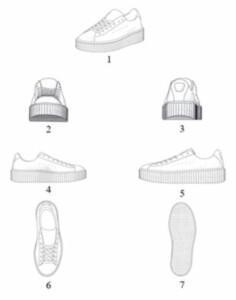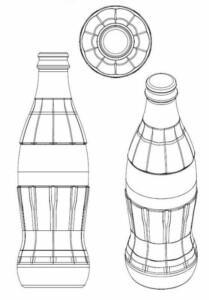A recent case in the General Court of the EU demonstrates the perils of social media posts and the consequences they can have for a company’s intellectual property rights. The case concerned some not-so-well-thought-out Instagram posts made by the Barbadian singer Rihanna. This case demonstrates some important lessons that every startup founder should learn.
In late 2014 Puma announced that it had appointed Rihanna as their creative director and brand ambassador. The following year they launched the FENTY x PUMA line. On 26 July 2016, Puma filed a design application for new shoe designs, shown below:
About three years later, in July 2019 a Dutch company called Handelsmaatschappij J. Van Hilst BV filed an invalidation action against Puma’s registered design.
Instagram posts and “novelty”
For a design to be registrable, it must be “novel” (new). This means that if the company has made the design public, it can no longer be protected as a registered design. There is, however, a 12-month “grace period”, during which registration is still possible. In other words, if you come up with a new design, such as a shoe, you will have 12 months to register that as a design. Otherwise, it will be too late.
The shoe that was born out of the collaboration was called Creeper. It was launched in September 2015, and in 2016 it was awarded the “shoe of the year” by Footwear News. Since September was clearly within the 12-month grace period of the filing date, it was possible to register the design the following July.
In support of the invalidation claims, Handelsmaatschappij J. Van Hilst submitted Instagram posts that Rihanna had posted in December 2014. These several posts showed her wearing the Creeper shoes. Further, these posts were to highlight the fact that Rihanna had just been appointed Puma’s creative director, and many news outlets broadcasted this message, together with the images taken from Rihanna’s Instagram account. As a result, the EUIPO invalidated (cancelled) Puma’s design registration.
The case has now been decided by the EU’s General Court, again against Puma. The EU court stated that the photos posted by Rihanna in 2014 showed all features of Puma’s design, and therefore Puma’s design registration was invalid.
The Rihanna case demonstrates that you need to be careful with your social media posts. A post that shows a new product can start the grace period for the registration of the design. In the present case, Puma would’ve been in the clear if it had registered the design around the time of the launch of the shoe in September 2015.
It is likely that Puma’s legal department was not aware of the 2014 photos, and was calculating the 12 grace period from the launch date. Without the Instagram photos, Puma’s registration would’ve been clearly within the grace period and the registration would still be valid.
Trademarks to the rescue?
While design registration is usually the most relevant way of protecting the appearance of a product, also trademarks can be used for that purpose. A very unique shoe could be registered as a three-dimensional trademark. A famous example of a product appearance that is registered as a trademark is the Coca-Cola bottle, shown below.
A prior disclosure on Instagram or other social media sites does not destroy the trademark’s registrability. In fact, the contrary is true. The more the product is used and shown on social media, the higher the chances of registration because the use of a mark builds its distinctiveness, which is a necessary condition for registration.
In most cases the biggest hurdle in protecting product appearance as trademarks is distinctiveness. For a design to be registrable, it is only required that the design is new and departs sufficiently from existing designs. For trademarks, the threshold is much higher. For trademarks, the shape must depart significantly from the shape that the consumer expects, and it must also depart significantly from the norms or customs of the sector.
In practice, this threshold is quite high. If the shape is not inherently distinctive, it may acquire distinctiveness through use. In other words, the more it is used, and the more people know it, the better the chances of registration.
In Puma’s case, trademark registration would not have been possible. According to EUIPO’s practice, the shoes in question would have been too commonplace for trademark protection. In other words, it would have been considered non-distinctive.
Conclusion
Whenever you post photos of your new product on social media (or any other websites), you need to be mindful of its legal implications. In Puma’s case, the designs were declared invalid because of Instagram posts.
It is almost always recommended to protect your designs before they are disclosed. The second best alternative is to protect them as soon after disclosure as possible. If, for any reason, you miss the 12-month mark, it might still be possible to protect the shape of the product with a trademark. However, the threshold is much higher for that, so in most cases design registration is the way to go.
See also
Should you register a design or a 3D trademark? What’s the difference?
The challenge of protecting iconic designs – case Ferrari 250 GTO





